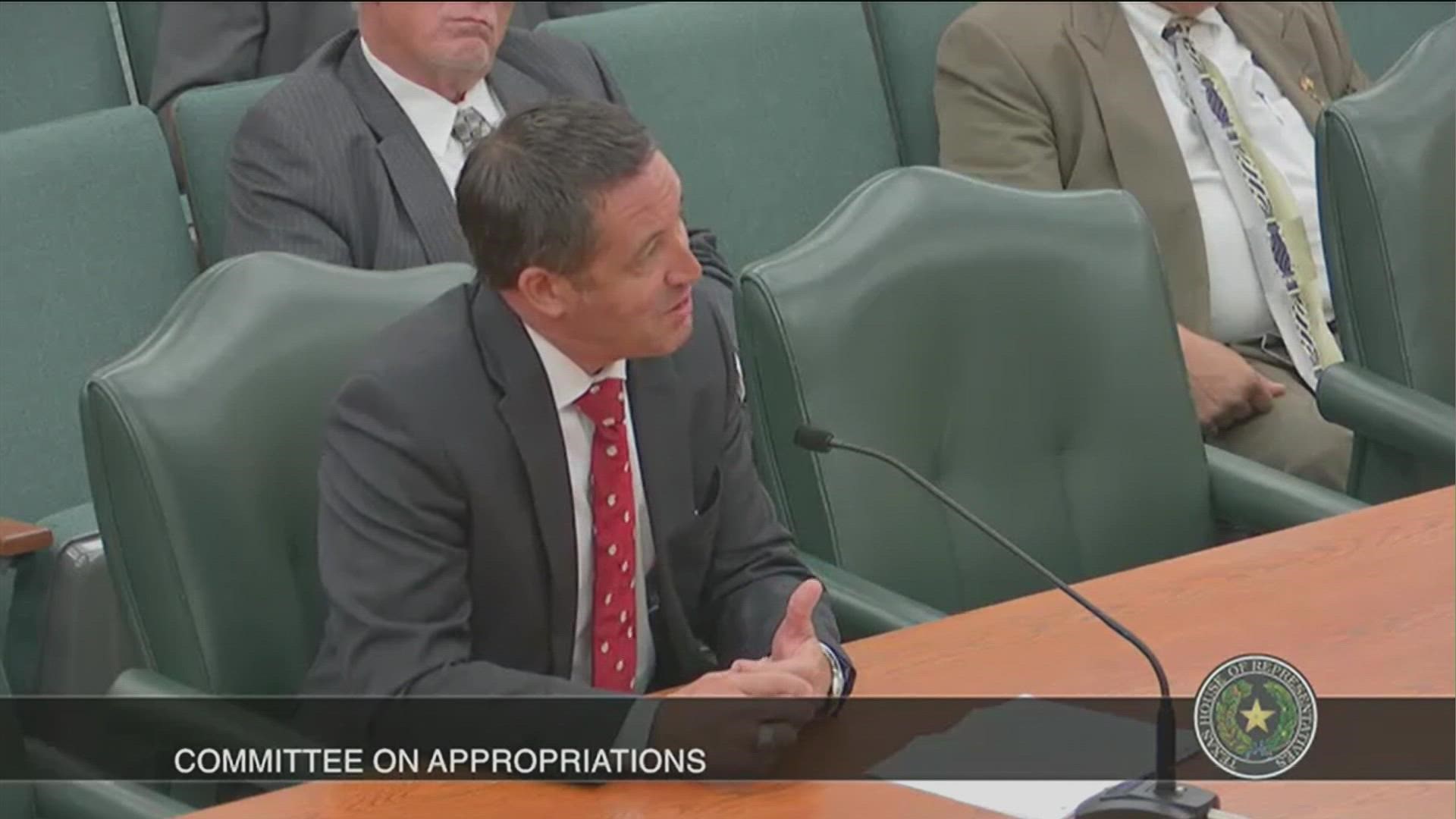AUSTIN, Texas — On Thursday, Texas Comptroller of Public Accounts released a new Certified Revenue Estimate for the 2022-23 biennial state budget. In testimony earlier this week, he told lawmakers there will be significantly more money for the state to spend and invest than previously forecast, in large part because of sales tax revenues over the past 15 months.
Hegar increased his November estimate of general revenue-related (GR-R) funds available for certification by $13.75 billion.
In a July 14 letter to state officials, Hegar said Texas will have $149.07 billion in GR-R funds available for general-purpose spending for the 2022-23 biennium, resulting in a projected fiscal 2023 ending balance of $26.95 billion, an increase of $14.95 billion from the November projected balance. The ending balance does not account for any 2022-23 supplemental appropriations the Legislature may make.
"I keep managing expectations that the revenues have been stronger, they've been stronger – they've been stronger," Comptroller Glenn Hegar testified to the House Appropriations Committee on Tuesday. "I've been saying this for some time now. They're stronger than we forecast. In the revenue forecast you'll see Thursday, the second year of the biennium, it is conservative growth."
According to University of Texas associate professor of accounting Brady Williams, adjusting revenue estimates involve a lot of planning, study and confidence.
"If you're the forecaster and you're committed and people are making allocation decisions based on that forecast, you're not going to raise the forecast unless you're really certain that it's going to persist," Williams said.
New estimates mean additional revenues are not based on seasonal spending, like holiday shopping.
"If it's just some transient increase or decrease in economic activity, the forecasters won't make an adjustment for that," Williams added.
However, current inflation concerns are taken into account with the new revenue estimate, according to Hegar's testimony.
"While we're having records coming into the state treasury, there is a significant piece of that, about 8.6%, is inflationary piece," Hegar testified. "The average person may say, 'Oh man, Texas has so much money,' but it takes more to pave the roads, takes more to pay for TRS Care. So sometimes just one number doesn't show the true story."
Inflation plays a bigger role across the country. To combat it locally, Williams said economic activity supports the sales tax revenue changes.
"When I see an increase of that magnitude, it suggests to me that there is actually fundamental economic activity underneath that's driving that," Williams said.
According to a press release sent out by Hegar's office earlier this month, that economic activity was primarily spurred by business transactions more so than individuals spending more for goods and services.
“The strongest growth was in sectors driven primarily by business spending, with receipts from the mining sector nearly doubling collections from last year, and with receipts from the manufacturing, wholesale trade and construction sectors also up sharply," the release said.
"Business-to-business sales are also subject to sales tax," Williams added for context. "There's a certain number of services that are also subject to sales tax. So I would expect that this increase is across the board. When you see an economy start growing disproportionately where one there's growth in one sector, usually that has spillovers."
Williams continued with an example of a new business moving to Texas.
"It may be paying sales tax, but it's also bringing employees with it, and those employees are buying, and then the people that they're buying things from have greater demand they have to go through," Williams said. "It's a process of spillovers."
The Economic Stabilization Fund (ESF; also known as the state’s “Rainy Day Fund”) and the State Highway Fund (SHF) both get funding from oil and natural gas severance taxes. In fiscal 2023, the ESF and SHF both will receive $3.58 billion in transfers from the General Revenue Fund for severance taxes collected in fiscal 2022. After accounting for appropriations and investments and interest earnings, Hegar said the CRE projects a fiscal 2023 ending ESF balance of $13.66 billion.
PEOPLE ARE ALSO READING:

